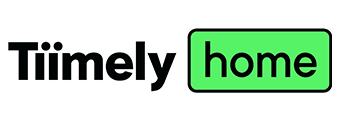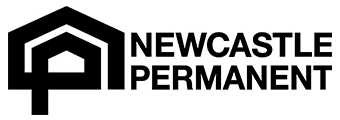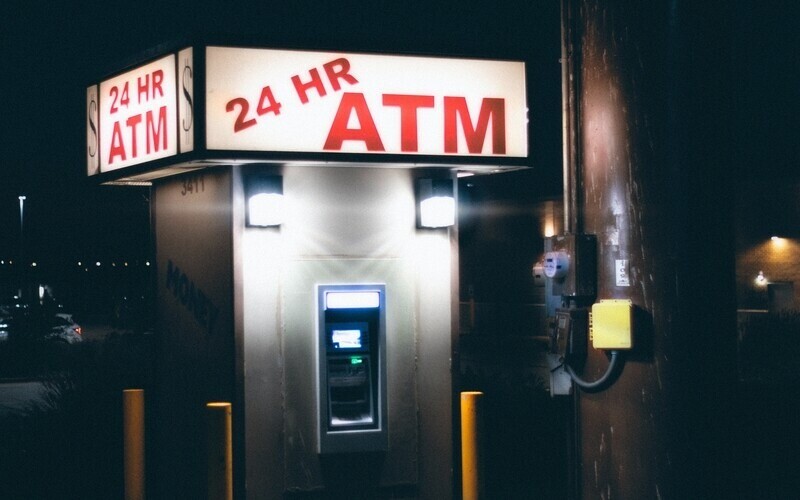Buying a home is likely to be the most expensive purchase of your life. There are a range of costs involved but the biggest ones will be the cost of the home itself, plus the cost of the home loan you take out to make the purchase.
In many cases, what you pay for your home loan can be hundreds of thousands of dollars over the term of your loan. Much of this will be in interest costs which are payable over the term of your loan, but a sizeable chunk may also come from home loan fees and charges.
Some lenders have a fondness for fees and if you're stung with even a few of them, they can seriously add up.
Many borrowers often don't even realise they have to pay a fee until it is levied, as some fees can be hidden deep within a lender's terms and conditions. To avoid this happening to you, it's important to check a loan's product disclosure statement, or PDS, to get a full breakdown of the fees involved before you apply.
Also, you can use a home loan's comparison rate as a quick general indicator of whether a loan comes with significant fees or not. As a rule of thumb, if a loan has a low advertised interest rate but a significantly higher comparison rate, there's a good chance it comes with some pretty hefty fees.
We've put together a comprehensive guide to home loan fees so you can have a better idea of what you may have to pay and when.
Upfront fees
Upfront fees are costs that you have to pay at the start of your mortgage. It's rare that you'll be approved for a home loan without being subject to some form of upfront fees. However, some lenders will waive some upfront costs as a way of attracting customers.
These fees can include:
Application fees
A home loan application fee is a one-time fee charged at the beginning of your home loan application for the processing and documentation of your loan. They can also be referred to as an establishment, start-up, or set-up fee.
Depending on the amount you plan to borrow and from which lender, application fees typically range from $150 to $800. They're also the most commonly waived fee and are usually non-refundable. As a reference point, all four of the big four banks charge an application fee of up to $600 and all four also carry loan products where these fees are waived.
Property valuation fees
A valuation fee is charged to cover the cost of your property being valued by the lender. It's used as a safeguard for you and the lender to ensure the amount being borrowed and your deposit is appropriate for the property being purchased.
Lenders also use formal valuations to assess the risk of lending. They are particularly important in calculating the loan-to-value ratio (LVR) which we'll discuss in more detail below.
Property valuations are a one-time fee, usually ranging from $100 to $600 depending on the type of property, location, and its value. For example, homes that are rural, remote, or valued above $1 million may incur a higher valuation fee than a suburban home in a capital city.
But again, some lenders may waive property valuation fees as an enticement to add you to their lending book.
Conveyancing fees
Conveyancing is the process of transferring ownership of a legal title of land from the seller to the new owner (aka you). This is handled by a conveyancer or solicitor and will attract a fee (are you sensing a theme here?).
Conveyancing fees are dependent on whether you're paying a fixed fee or a sliding fee based on your property's price, and typically range from $500 to $2,200. Again, sometimes a lender may include its conveyancing fees in a "fee-free" home loan offer or special promotion.
Note: conveyancing fees charged by your lender will be separate to conveyancer or solicitor costs you will need to pay to represent your interests in a property settlement.
Stamp duty
Not to be outdone by lenders, governments will hit you with stamp duty, also known as transfer duty, on a home purchase. In basic terms, stamp duty is a state government tax and covers the cost of changing title and ownership details.
These significant fees are typically paid upon settlement of a property and vary depending on:
-
Whether you're a first home buyer
-
The cost of your home
-
What state you live in
As an example, an established New South Wales home valued at $700,000 would see stamp duty costs in excess of $26,000, based on the calculations of our stamp duty calculator. But if it was being purchased by a first home buyer, the transfer would not attract stamp duty (as at September 2024).
Although you can use our stamp duty calculator as a guide, a solicitor or conveyancer will calculate the official cost of stamp duty payable on your property.
Legal fees
It's nigh on impossible to go through buying a home with a mortgage without the involvement of legal professionals.
Borrowers will often be required to pay their lender's legal fees, as well as the cost of engaging their own solicitor or conveyancer whose job is to ensure the sale contract is in order and oversee the legal aspects of the property settlement and transfer.
Depending on your lender, their legal fees can range from $200-$450 upwards, although some lenders may choose to waive these fees.
Generally, legal fees charged by your own solicitor or conveyancer can total between $1,000-$2,000 depending on the complexity of the sale. Conveyancer fees are typically a little less, between $700-$1,300 for a standard transaction.
Mortgage registration fees
Mortgage registration fees are charged by state and territory governments to register the physical property as the security on the home loan. This allows any future buyers to check any claims that exist on the home.
Mortgage registration fees are paid when the loan is established or discharged (or in Tasmania's case, both!)
Check out the mortgage registration fee for each state and territory in the table below.
|
State |
Fee |
|---|---|
|
ACT |
$172 |
|
NSW |
$171.70 (including GST) |
|
NT |
$172 |
|
QLD |
$224 |
|
SA |
$192 |
|
TAS |
$159.88 (mortgage discharge fee $198.22) |
|
VIC |
$131.90 (paper); $122.10 (electronic) |
|
WA |
$210.30 (not including GST) |
Source: State and Territory government websites, as at September 2024
Search processing fees
Search processing fees are paid to your lender to perform a title search, or any other searches related to your application. This is generally around $50 per search.
Lenders mortgage insurance
Lenders mortgage insurance (LMI) is an insurance policy which covers lenders against losses they may incur in the event the borrower can no longer make loan repayments, also known as defaulting on the loan.
Typically, you'll be exempt from LMI if your deposit on the property is greater than 20% (80% LVR). However, different lenders - and their various loan products - will have different requirements.
It's generally advised you look to avoid LMI as it can add considerable cost to your loan. As an example, if you pay a 10% deposit on a $700,000 property, it could cost you around $12,600 in LMI. You can use our lenders mortgage insurance calculator to give you some idea of what LMI charge you could be up for.
However, there are times when it can be worth paying LMI, like when you think property prices are going to surge and want to get into the market as soon as possible.
Alternatively, you can seek out a lender that offers low or no-cost LMI loan products.
Ongoing fees
In addition to your monthly repayments on your home loan, you could also be subject to various ongoing fees, depending on your lender and the product you sign up for. Some lenders will waive ongoing fees as part of a promotion or special offer while others won't charge ongoing fees at all.
Check out our full breakdown of the following ongoing fees below:
Monthly service fee
A monthly service fee covers the cost of the service and administration of your home loan. It's charged monthly (obviously) and typically ranges from between $5 to $15.
Annual fees
If you've taken out a mortgage which is part of a package home loan deal, you'll more-often-than-not be subject to annual fees, typically due to reduced interest rates or other promotional discounts. Many home loans waive these fees for a length of time (often the first year) to attract customers.
They generally range from $300 to $400, which may be a worthwhile expense based on the money you can save in signing up for the deal. Be sure that the features offered as part of a home loan package are something you would use and offer reasonable terms and conditions compared to other products on the market.
Redraw fees
Some lenders offer home loans with a redraw feature that allows you to withdraw any extra payments you've made over the life of your loan.
You might have to pay a fee for each time you redraw, however, some lenders may waive this requirement as part of your sign-up offer. Others don't charge redraw fees at all, advertising 'fee-free redraws'.
Fees to redraw from redraw facilities can range from $0 to $50, often with minimum redraw amounts.
Late payment fees
A late payment fee may be charged if you don't meet your minimum monthly repayment by the due date.
Sometimes there may be some leeway but lenders generally charge around $20 for a late payment. For example, CommBank's late payment fee is $20 which is levied until the outstanding amount is paid; however, there is a five business day grace period after the due date to allow for extenuating circumstances.
If you're in financial difficulty and feel like you won't be able to make your next repayment, contact your lender's financial hardship team (which it is obliged to have). Remember, a customer who pays one late fee is still more valuable to a lender than one who switches to another lender or defaults on the loan.
Your lender may be able to make special arrangements to help you get through a difficult period.
See also: What to do if you lost your job and have a mortgage
Switching fees
If you're looking to fix your mortgage or want to switch to a variable rate then you could be subject to a switching fee. (Some other fees can also apply when refinancing.)
Refinancing costs and fees will vary between lenders but if you're doing it right, the savings from refinancing should far outweigh the costs of switching.
Use our refinance home loan calculator to see how much you can save by switching to a cheaper home loan.
Portability fee
Home loan portability is a feature that allows you to keep the same home loan product when you sell your home and purchase another. Essentially, you take the loan with you even though the property it's secured against will change. Using this feature will, of course, generally cost a fee which differs between lenders but is typically around $200.
Exit & discharge fees
When you get to the end of your home loan, whether that's 25 or 30 years down the track, or due to refinancing, there will likely be costs involved in ending the process.
The last thing you want when you're finally rid of your loan is to be hit with an unexpected charge, so check out all the potential home loan exit fees below:
Home loan exit fees
Home loan exit fees on new loans were banned on 1 July 2011 under the Gillard government but can still be charged on loans signed before this date, although some lenders have removed them. Since home loans can last for as long as 30 years (and sometimes longer), there's a good chance many older loans will still have exit fees attached.
If you're looking to refinance, double-check with your lender if you'll be subject to exit fees as these can be costly and vary widely.
Discharge fees
When you've paid off your loan in full, your lender may require you to pay a discharge fee to cover the cost of the completion of the process and corresponding paperwork. Also known as termination or settlement fees, these fees can range from $150 to $400.
As an example, check out the discharge fees for the big four banks below.
|
Bank |
Discharge fee |
|---|---|
|
ANZ |
$160 |
|
CBA |
$350 |
|
NAB |
$350 |
|
Westpac |
$350 |
Information accurate as at September 2024.
Early exit fees
Early exit fees may be charged by your lender if you fully pay off your mortgage within a period specified by the lender, usually the first five years of the loan.
They're also known as early termination, deferred establishment, deferred application, or early discharge fees.
The law states these fees are limited to the recovery of a credit provider's loss caused by the early exit which may amount to a large sum. Generally, you won't know what the early exit fee is until your lender does its calculations.
Fixed-rate break costs
Fixed-rate break costs include the two afore-mentioned fees - a discharge fee and an early exit fee. Actions that constitute breaking a fixed-rate contract are switching to a different product, such as a variable rate loan, exceeding the extra repayment limit, and/or repaying the loan in full.
It's usually not in your best interest to break your fixed contract as, in many cases, the benefit may not outweigh the hefty costs involved in switching loans.
Home Loans with no or low fees
The table below may be able to help you in your quest to find home loans that come with no or low fees as well as having some of the lowest interest rates on the market.
| Lender | Home Loan | Interest Rate | Comparison Rate* | Monthly Repayment | Repayment type | Rate Type | Offset | Redraw | Ongoing Fees | Upfront Fees | Max LVR | Lump Sum Repayment | Extra Repayments | Split Loan Option | Tags | Features | Link | Compare | Promoted Product | Disclosure |
|---|---|---|---|---|---|---|---|---|---|---|---|---|---|---|---|---|---|---|---|---|
5.49% p.a. | 5.40% p.a. | $2,836 | Principal & Interest | Variable | $0 | $0 | 80% |
| Promoted | Disclosure | ||||||||||
5.54% p.a. | 5.55% p.a. | $2,852 | Principal & Interest | Variable | $0 | $0 | 90% | |||||||||||||
5.50% p.a. | 5.50% p.a. | $2,839 | Principal & Interest | Variable | $0 | $0 | 90% | |||||||||||||
5.49% p.a. | 5.53% p.a. | $2,836 | Principal & Interest | Variable | $0 | $0 | 80% |
| ||||||||||||
5.89% p.a. | 5.89% p.a. | $2,962 | Principal & Interest | Variable | $0 | $0 | 60% | |||||||||||||
5.94% p.a. | 5.95% p.a. | $2,978 | Principal & Interest | Variable | $0 | $0 | 97% |
Savings.com.au's two cents
It can be hard to find a home loan that doesn't charge a single fee at any point in time. Even when lenders advertise a "no-fee loan", they may be referring to the main fees associated with home loans, like upfront or ongoing fees. Generally, less prominent charges like late payment fees and discharge fees will still apply.
Your best bet in keeping your loan fees to a minimum is to seek out home loan deals where lenders are waiving fees in a bid to gain more customers. Even then, make sure you check the product's comparison rate to give you some gauge of what the loan might actually cost you in fees and charges.
Doing your research and having a good understanding of what you want from your home loan is an easy way to avoid unnecessary fees and to find the best product for you. Comparison rates can provide a general guide but your best bet is to have a thorough look through a loan's PDS so that you're aware of all the potential fees involved before you apply.
Image by Matthias Jordan on Unsplash
Disclaimers
The entire market was not considered in selecting the above products. Rather, a cut-down portion of the market has been considered. Some providers' products may not be available in all states. To be considered, the product and rate must be clearly published on the product provider's web site. Savings.com.au, yourmortgage.com.au, yourinvestmentpropertymag.com.au, and Performance Drive are part of the Savings Media group. In the interests of full disclosure, the Savings Media Group are associated with the Firstmac Group. To read about how Savings Media Group manages potential conflicts of interest, along with how we get paid, please click through onto the web site links.

Ready, Set, Buy!
Learn everything you need to know about buying property – from choosing the right property and home loan, to the purchasing process, tips to save money and more!
With bonus Q&A sheet and Crossword!









 Harry O'Sullivan
Harry O'Sullivan
 Bea Garcia
Bea Garcia
 Denise Raward
Denise Raward


